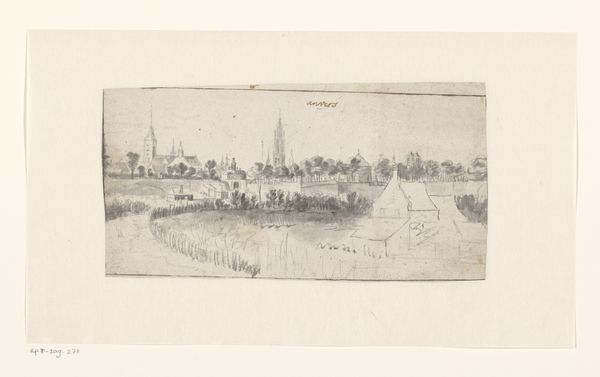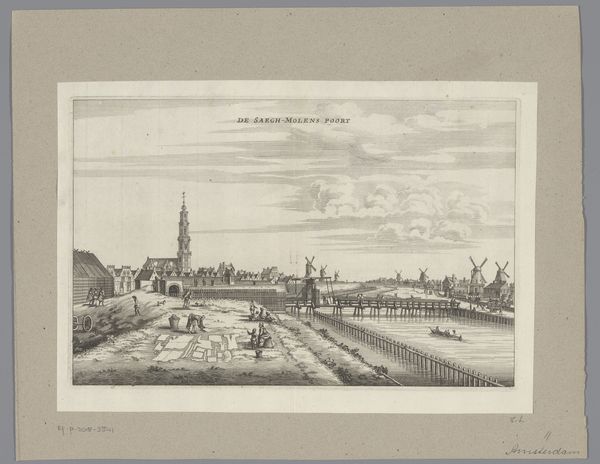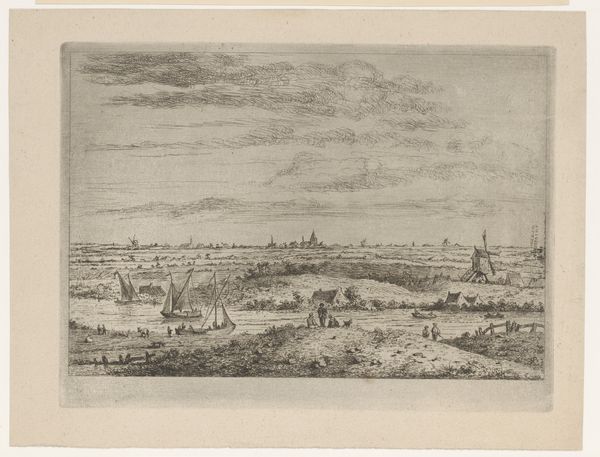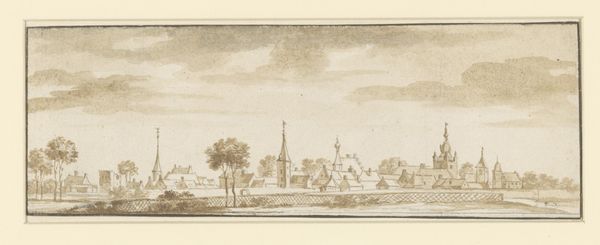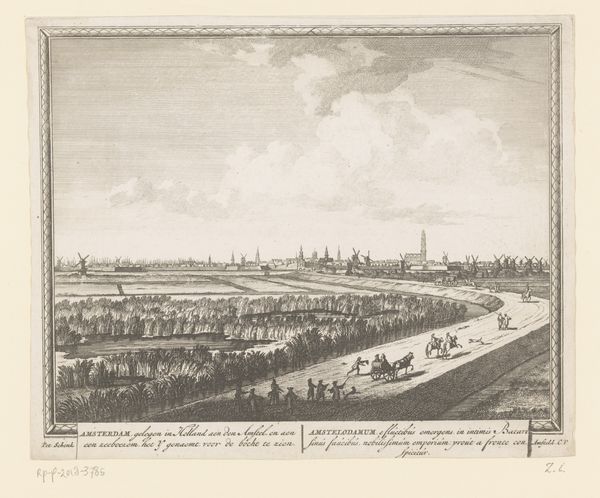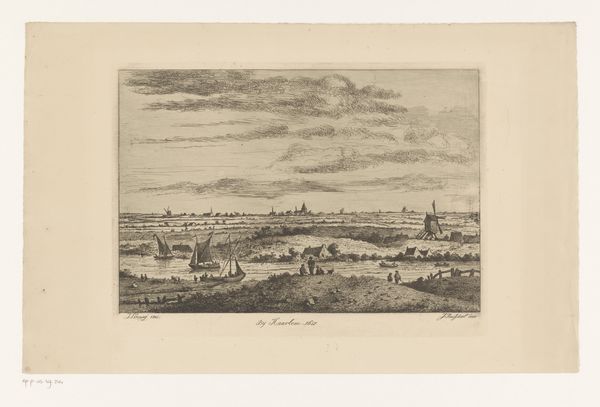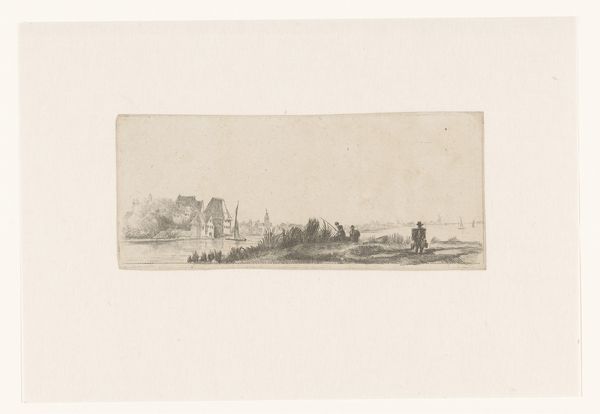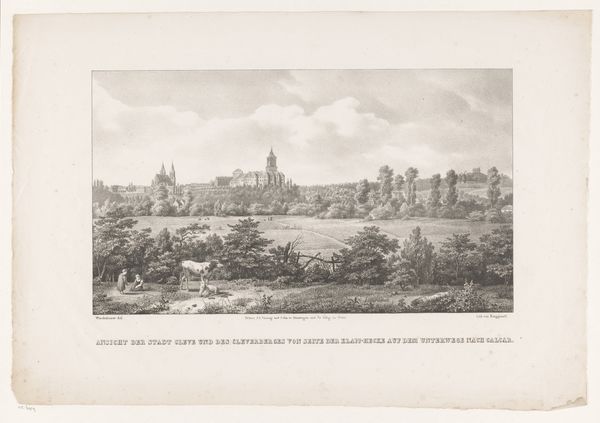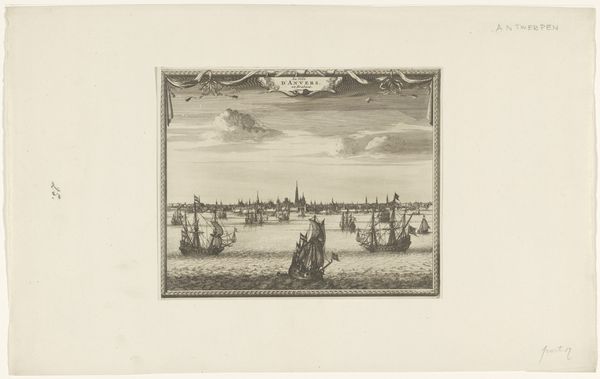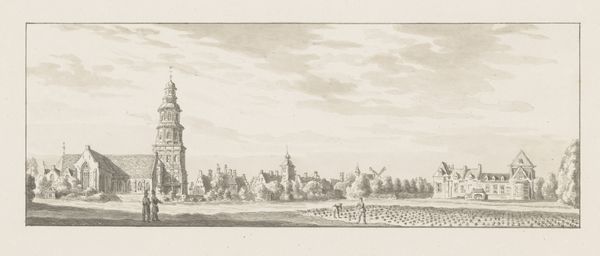
drawing, paper, watercolor, pen
#
drawing
#
dutch-golden-age
#
landscape
#
etching
#
paper
#
watercolor
#
pen
#
cityscape
#
watercolour illustration
Dimensions: height 315 mm, width 405 mm
Copyright: Rijks Museum: Open Domain
Curator: Let’s take a look at this piece attributed to Gerrit Grasdorp: "View of Zwolle," a cityscape crafted sometime in the 17th century, rendered with pen, watercolor, and possibly etching on paper. Editor: It has such a quiet feel about it. There’s something about the almost bleached-out sky and the muted greens that gives it this wistful quality. I’m immediately drawn to the silhouette of the city against that pale sky, and the figures working in the field. Curator: Grasdorp likely intended to present Zwolle not merely as a physical space, but also to communicate the virtues of hard work and civic pride which were valued within Dutch society at the time. Landscapes became popular during the Dutch Golden Age because they bolstered a new sense of national identity and accomplishment after the revolt against Spanish rule. Editor: Absolutely. The skyline itself is like a symbolic representation of the community, with each church spire and building contributing to the whole. The windmill on the far left particularly speaks of innovation and harnessing natural power, important for cultural iconography. Curator: What's interesting too, is the subtle presence of these almost generic agricultural workers in the lower third of the composition, who serve as a vital juxtaposition between nature and society. It prompts questions about the relationship between the land and those who inhabit and cultivate it. Editor: Right, they are like earthly anchors, tying the divine aspirations represented by the churches to the fertile ground beneath. Their positioning certainly reinforces this dialogue between spiritual ambition and tangible labor, with this timeless visual formula reminding people of their duty to community. Curator: Examining Dutch Golden Age cityscapes allows us a nuanced view into the development of cultural identity during the post-revolt era. We observe a celebration of locality alongside universal ideals. Editor: And through those simple earthy symbols of labour, we recognize values from centuries ago reflected in today’s continuous quest for harmony between nature and civilization. I find that very encouraging, ultimately.
Comments
No comments
Be the first to comment and join the conversation on the ultimate creative platform.

